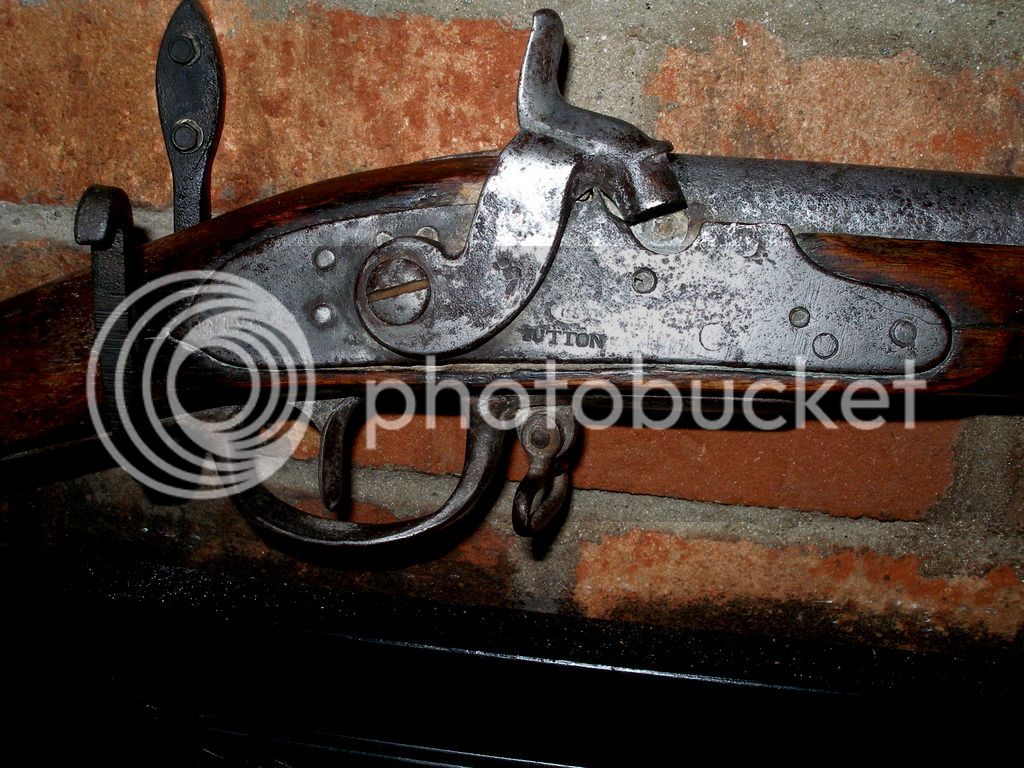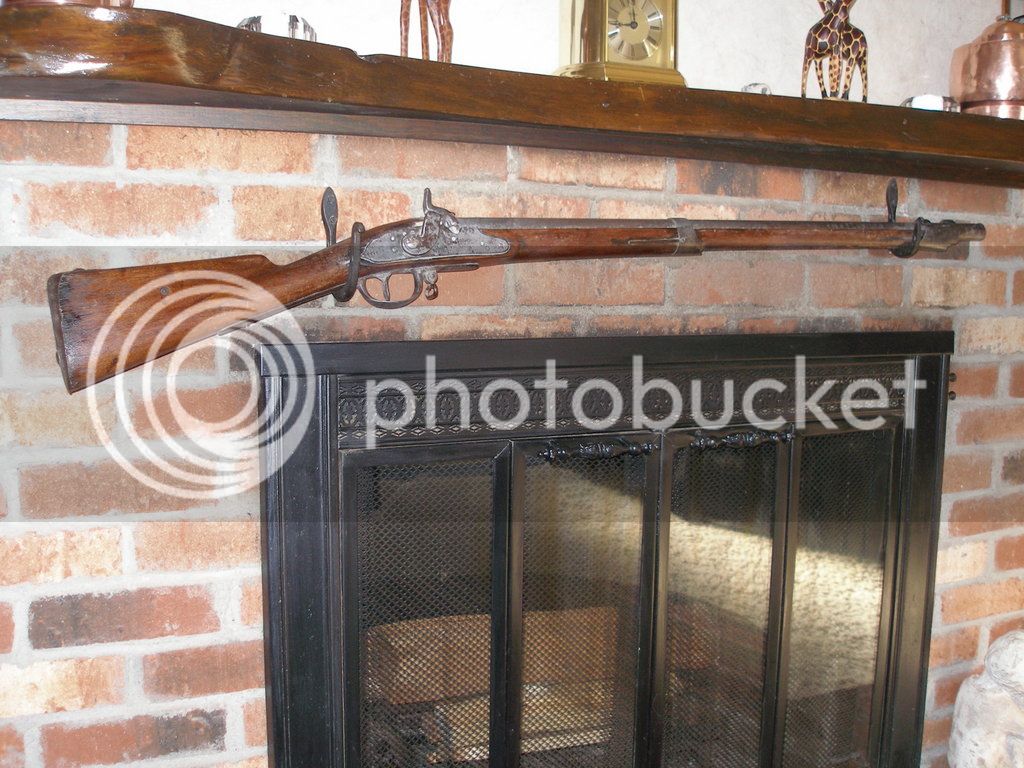Simply put, what you've got is the mythical "M.1808" a private contract pattern musket that's been shortened with the middle barrel band discarded AND converted to percussion, probably in the late 1850's, using the 'first' or "French" style conversion technique. That was the easy part!
Although there was a "John Sutton-gunsmith. 55 Duke St., Philadelphia, Penn., 1819"...he's a red herring here. He had me going for a while too!
What happened was that in 1808 the U.S. started getting the fidgets with everything going on in Europe and the British behavior in the Atlantic. So for it's own protection, Congress passed an "Act for Arming and Equipping the Militia" and ordered 85,200 muskets from 19 private makers (of which, probably half were ever finished)for "...arming and equipping the militia". So far, doing what they said. Some went to militia units as delivered, some went to the Federal armories till needed. Should add a this point, the guns in question were in fact copies of the original U.S. made copies of French "Charleville" muskets of AWI vintage. The thing gets hard to follow when it comes out the Federal armories at Springfield, Mass. and Harpers Ferry, Virginia, each made a slightly different version of what became known as the M.1795 Flintlock Musket. Each armory made their own version with different stock architecture, fittings and barrel length...everybody's happy since the Vir. guns go to southern states and Mass. guns go to northern states...and never the twain shall meet! Comes 1808 and Congress needs 85,000+ more!
One of the 19 private gunmakers contracted for this work is the firm of Elijah and Asa Waters and Nathanial Whitmore of Sutton, Massachusetts who get a contract for 5,000 muskets, of which it's now thought they actually finished around 4,270 pieces. The thinking of the day was that with private makers, use the town name rather than the maker's firm name. Not sure who's bright flash that was, but it lasted a while and is one of the reasons the M.1841 Rifle, besides being known as the "Mississippi" rifle for it's use by the First Mississippi Volunteers, is also known as a "Windsor" rifle...Robbins, Kendall & Lawrence stamping their location of Windsor, Vt. on the lock...but I digress!
Actually, the M.1795/'1808'(which really doesn't exist, except collectors in the early 20th century needed something to call all the 1808 contract guns)was a three band, .69 caliber smoothbore musket. Due to their location, Waters would have received one of the Springfield Armory "Charleville" types of M.1795 muskets with instructions to 'make'm like this'. Their production would probably have a 1808 or 1809 date at the tail of the lock, would have been stamped or engraved with an eagle over a panel with a small "U.S." above "Sutton" on lock forward of the hammer...a couple other variations exist for Waters but these would be marked "Millbury" where they set up an additional shop for the contract.
These muskets can also have state militia markings on barrel or stock as well, which can effect value in fine graded pieces. All these contact pieces should have been issued with 44" or 45" barrels, depending on which armory they got their "example" from, though some 42" or 43" inch barrels have been noted on these 1808 contract muskets. All would have been full size with three barrel bands.
Yours was shortened at some time in it's existence, though exactly when or why is speculative. Measure the barrel and let us know, just for information sake. There are a very few examples of shortened barrels at 33", now thought to be for artillery but not a known issue piece. I have no idea who did the percussion conversion but the hammer is of the "French" conversion type. The drum would obviously have been round and I suppose you can find one to fit if you want to try to bring it back to it's original post-conversion appearance. As for ramrod, since it's been altered already, don't spend the dollars trying to hunt down an original. We have in my wife's family, an old M.1816 percussion conversion in NRA "grungy" condition. I bought a copy ramrod from Dixie, buried it in the back yard off the back porch and played fountain on it in the dark for a couple months. It got really "authentic"! :rotf: Pits, color and all. Clean off and it looks just like the rest...gun will never be fired so what difference will it make? Still haven't told the step-son how it got so 'authentic' looking! :haha: May not be your cup of tea, but buried and water poured will do the same but take a bit longer. :wink:
Better stop before this becomes an epistle! I hope this helps you figure out your baby. It's homegrown...,Mass. wise, and probably has an interesting history. Read all this drivel a couple times...if it still doesn't make sense, I'll try to answer any part you have questions about. Good luck and have fun making that neat old musket look better! :thumbsup:






